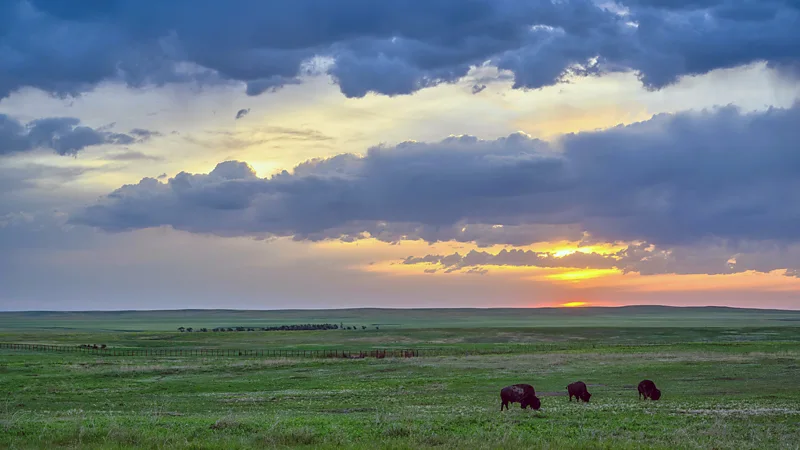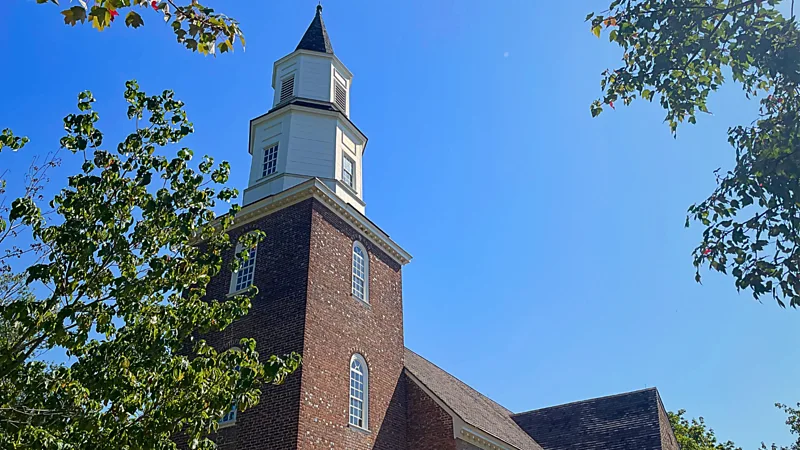A national awakening to the Great Plains' gourmet bounty
Once overlooked, new restaurants are embracing exciting foods native to the prairie, as well as nearly forgotten Indigenous recipes, cooking techniques and ingredients.

An ocean of grass blanketing the heart of North America, the prairie (also known as the Great Plains) is the largest ecosystem in the US – 1.4 million sq miles of steppe-like flatlands running from western Ohio to the foothills of the Rockies and from northern Mexico well into Canada. Although hailed as America's breadbasket for its prodigious agricultural output, the Great Plains are sometimes also dismissed for offering food that's more plain than gourmet – think: meat and potatoes, bland flavours heavy on grains and soy.
"The stereotypes from Little House on the Prairie – podunk farmers in log cabins living off corn and cereals – still haunt us," said Ohio chef and co-author of Koji Alchemy, Jeremy Umansky, when I met him at his Cleveland restaurant, Larder Delicatessen & Bakery. While Umansky, who has delivered TED Talks on food history, considers himself a Great Lakes chef, he often drives to Ohio's western prairies to forage herbs, grasses and wild plants used to flavour the pickles he pairs with pastrami and smoked pork. "For an open-minded chef, the prairie is a fascinating place. In recent years especially, some of the nation's most exciting new restaurants are on the prairie."
Ecological factors and human history have long conspired to make the prairie a garden of gourmet delights. Indigenous Plains tribes, Germans, Scandinavians and Eastern Europeans have left their culinary traditions on the sprawling American savannah, and small farmers continue to cultivate Old-World grains like einkorn, emmer and amaranth. The vast prairie's dark soil – once known as Black Gold – nourishes robust vegetables as well as wild edible roots, herbs and flowers. Game like pheasants, quail and deer run thick in rolling meadows. "Mark Twain wrote gleefully about his love for prairie food 150 years ago," Umansky said. "And the region's rich culinary tradition stretches back a long time before that, beginning with the food of pre-Columbian Plains societies." The wider world's interest in the prairie's epicurean pedigree has been a long time coming.
On the forefront of a national awakening to the prairie's gourmet potential is Owamni by the Sioux Chef, a Minneapolis restaurant awarded the 2022 James Beard Foundation's Best New Restaurant. Opened by chefs Sean Sherman and Dana Thompson, members of the Oglala and Mdewakanton Sioux nations, respectively, the restaurant spotlights the overlooked cuisines of Native American cultures. "Owamni has created a living encyclopaedia not only of prairie foodways but near-forgotten Indigenous recipes, cooking techniques and ingredients," Umansky said. "No restaurant anywhere is cooking more American food."
Owamni's team crafts artful plates using the prairie's wild tubers, herbs, game and mushrooms – the staple foods of nomadic plains communities like the Sioux, Arapaho and Cheyenne – and eschews ingredients introduced to America after European contact. Cooking only with pre-Columbian ingredients might seem constrictive, but Thompson relies on prairie plants that mimic the flavours of post-colonial culinary staples. Wild honey, maple syrup or berries replace cane sugar to sweeten desserts, for instance. Rather than lemon, a fruit originally from Asia, Thompson brightens dishes with sumac, a crimson flower with a similarly acidic zip. And cedar extract lends a piquant spiciness reminiscent of black pepper.
One of Thompson's favourite ingredients is hoary nettle, a seasoning and medicine long used by Plains Indigenous nations. "Pressed nettle leaves make the most beautiful green oil," Thompson said. "It's also packed with antioxidants and is one of the healthiest plants you can eat."
Dana Thompson At The Modern Indigenous, the squash soup is drizzled with nettle oil (Credit: Dana Thompson)Dana Thompson
At The Modern Indigenous, the squash soup is drizzled with nettle oil (Credit: Dana Thompson)
At Owamni and The Modern Indigenous, Thompson's newest venture in Minneapolis, the emerald-hued oil cuts through the bold flavours of squash soups or braised rabbit with palate-cleansing astringency. Thompson also harkens back to Indigenous preservation methods to smoke meat and vegetables with tree bark, grasses and leaves. "Just because a plant is non-edible doesn't mean we can't use it in the kitchen – it might be perfect for smoking, curing or colouring," she said.
Ten latitudes north of Owamni, near where the grasslands yield to Canada's boreal forest, the Alberta restaurant RGE RD celebrates the high prairie's carnivorous treats. The growing season is fleeting in Alberta, but co-owners Blair Lebsack and Caitlin Fulton view this brevity as a creative spur. "The long winter shifts our focus to gourds, roots and pickles as well as heartier cuts of meat,'' Fulton said in RGE RD's dining room, a rustic salon perfumed by birch smoke from the kitchen's wood-burning grill. The province's fecund soil nourishes a remarkable range of produce, even within the precious few weeks of mild weather. "We have over twenty different varieties of potato, each with a subtly different flavour," she said.
RGE RD's bison spaetzle, a dish of handmade noodles studded with charred bison and baby carrots, mixes both the Indigenous and German influences of Alberta. Lebsack compliments the slightly gamey flavour with a sauce of Saskatoon berries, a prairie fruit as inky purple as açaí and as tart as cranberry. Indigenous nations, Lebsack explained, once used the berries to make pemmican, a dried mixture of pulp and meat ideal for eating on horseback.
Bryan Moscatello, an East Coast chef with accolades from Bib Gourmand and Forbes, turned down offers in New York City to write his next chapter in Sioux Falls, South Dakota. Fascinated by the possibilities of Great Plains ingredients elevated with his Michelin-level finesse, he launched Harvester Kitchen by Bryan in a former tractor depot. Moscatello's seasonal menus have included heirloom potatoes topped with caviar, cauliflower smoked with hay, and elk and bison charcuterie. The night I visited, pheasant season was in full swing, and the nightly special was ravioli stuffed with pheasant confit and squash paired with rosy sous vide pheasant breast.
After dessert – deconstructed s'mores with a smear of dopamine-jolting chocolate ganache – I decamped to an Adirondack chair on the porch to watch the sunset. As the day's last light morphed the grasslands into a sea of gold, I ruminated on my growing list of prairie restaurants for future Heartland visits: Nonesuch in Oklahoma City, reimagining the possibilities of prairie ingredients with the avant-garde techniques of molecular gastronomy; Emmer and Rye in Texas, where chef Kevin Fink alchemizes biblical grains into luxurious pastas; and, just a few blocks from where I was sitting, Sanaa's Gourmet, a James Beard-nominated restaurant helmed by Sanaa Abourezk, a transplant to South Dakota from Syria.
The prairie, that great open expanse across the heart of North America, remains as alluring for today's ambitious chefs as it was for the nomadic tribes, homesteaders, cowboys and pioneers of eras past. And while the open range and endless hectares of untrammelled land now only exists in history books, the prairie might be America's last culinary frontier in the 21st Century.
-bbc






